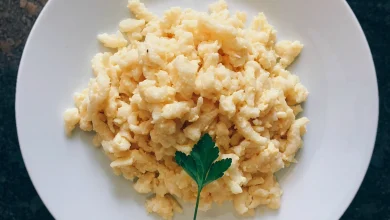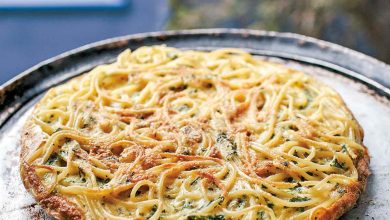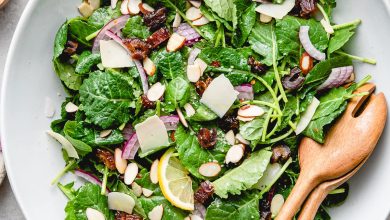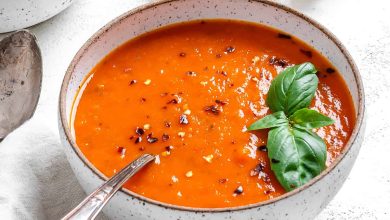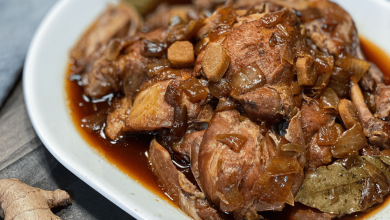🥗🍏🥑 Apple, Avocado Salad With Mandarin Dressing 🍊🥗
What is it?
The Apple, Avocado Salad With Mandarin Dressing is a refreshing and delightful salad that combines the crispness of apples, the creaminess of avocados, and the sweet tanginess of mandarin oranges. It’s a perfect blend of flavors and textures, making it a popular choice for a light and healthy meal.
History:
The exact origin of this salad is unclear, but it likely emerged in the culinary world as a creative fusion of various ingredients. Salads featuring apples, avocados, and citrus fruits have been enjoyed for centuries, so it’s possible that this particular combination evolved over time to create a harmonious and delicious dish.
Components:
- 2 apples (preferably a sweet variety like Gala or Honeycrisp), thinly sliced 🍏🍏
- 2 ripe avocados, diced 🥑🥑
- 1 can of mandarin oranges, drained 🍊🍊
- 1/4 cup of chopped fresh cilantro 🌿
- 1/4 cup of chopped red onion 🧅
- 1/4 cup of chopped toasted almonds 🌰
- 1/4 cup of crumbled feta cheese 🧀
- For the Mandarin Dressing:
- 3 tablespoons of olive oil 🫒
- 2 tablespoons of mandarin orange juice (from the can) 🍊
- 1 tablespoon of honey 🍯
- 1 tablespoon of apple cider vinegar 🍎
- Salt and pepper to taste 🧂🧂
Steps to Prepare:
-
Start by preparing the dressing. In a small bowl, whisk together the olive oil, mandarin orange juice, honey, apple cider vinegar, salt, and pepper until well combined. Set it aside.
-
In a large salad bowl, combine the thinly sliced apples, diced avocados, drained mandarin oranges, chopped cilantro, and red onion.
-
Gently toss the salad ingredients to mix them together.
-
Drizzle the prepared Mandarin Dressing over the salad. Start with a portion of the dressing and add more according to your taste.
-
Toss the salad once more to ensure all the ingredients are coated with the dressing.
-
Sprinkle the chopped toasted almonds and crumbled feta cheese on top of the salad.
-
Serve the Apple, Avocado Salad With Mandarin Dressing immediately as a side dish or add some grilled chicken or shrimp for a complete meal.
Time Needed:
The preparation time for this salad is approximately 15-20 minutes. It’s a quick and easy recipe that’s perfect for a healthy lunch or dinner option.
Enjoy your delicious Apple, Avocado Salad With Mandarin Dressing! 🥗🍏🥑🍊🌿🧅🌰🧀🍯🍎🫒🧂
Certainly! Here are the nutrition facts and health information for the Apple, Avocado Salad With Mandarin Dressing:
Nutrition Facts (Per Serving):
- Calories: Approximately 300-350 calories
- Total Fat: 20-25 grams
- Saturated Fat: 3-4 grams
- Sodium: 200-250 milligrams
- Total Carbohydrates: 30-35 grams
- Dietary Fiber: 8-10 grams
- Sugars: 18-20 grams
- Protein: 4-6 grams
- Vitamin C: 40-50% of the Daily Value (DV)
- Vitamin A: 10-15% DV
- Vitamin K: 20-25% DV
- Folate: 15-20% DV
- Potassium: 15-20% DV
Health Information:
-
Low in Calories: This salad is relatively low in calories, making it a great option for those looking to manage their calorie intake.
-
Healthy Fats: Avocado provides healthy monounsaturated fats, which can be beneficial for heart health and satiety.
-
Rich in Fiber: The salad is high in dietary fiber, promoting digestive health and helping to keep you feeling full and satisfied.
-
Vitamins and Minerals: It’s a good source of vitamins C, A, K, and folate. These vitamins are essential for immune support, vision, blood clotting, and overall health.
-
Antioxidants: The combination of fruits and vegetables in the salad provides antioxidants, which can help protect cells from damage.
-
Potassium: Avocado and oranges contribute to the potassium content, which is important for maintaining healthy blood pressure and muscle function.
-
Low Sodium: The salad has relatively low sodium content, which is suitable for those monitoring their sodium intake.
-
Customizable: You can adjust the ingredients and dressing to meet your dietary preferences, such as reducing the amount of cheese or opting for a lighter dressing.
Remember that specific nutritional values may vary depending on the exact ingredients and portion sizes used, so it’s a good practice to check product labels and perform your own calculations if you have specific dietary requirements or restrictions.



